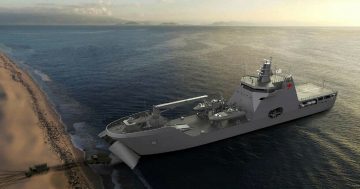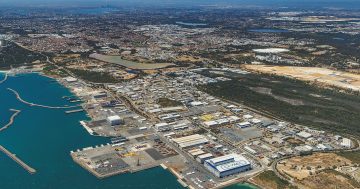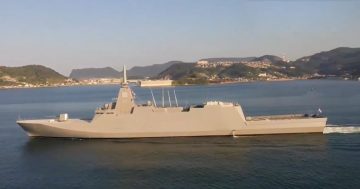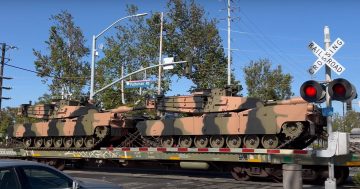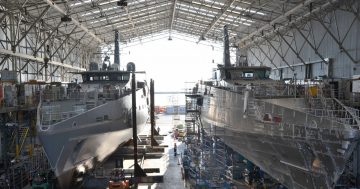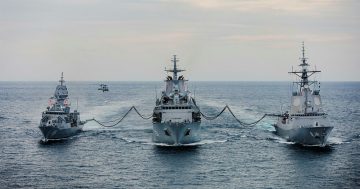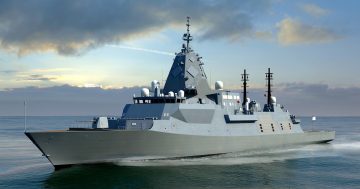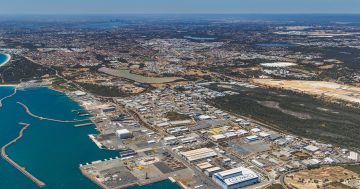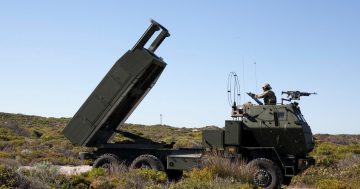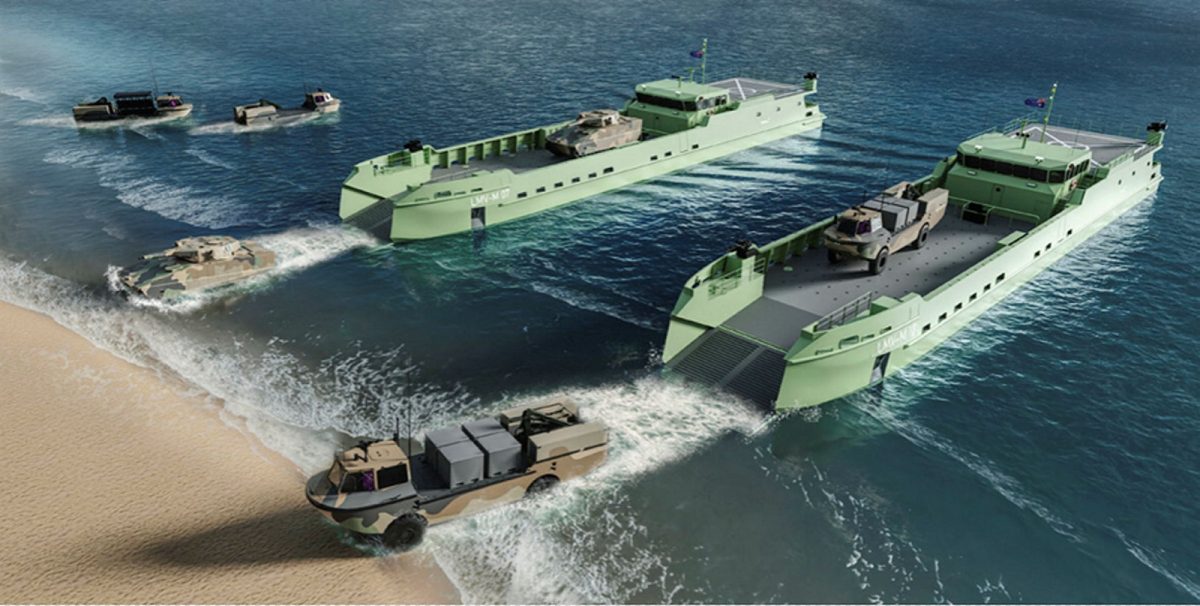
The new LMV-M will have a capacity of 90 tonnes and the ability to bring ashore vehicles such as the LARC-V replacement (foreground) and Abrams main battle tank. Image: Birdon via ADF.
The Federal Government has announced that the build program for a fleet of 18 amphibious landing craft for the Australian Army will be accelerated, with first deliveries now scheduled for 2026.
The new craft were designed by NSW firm Birdon in conjunction with naval architects Incat Crowther, and will be built at Henderson in Western Australia by Austal. They were selected in November 2023 for the army’s Project LAND 8710 Phase 1A Littoral Manoeuvre Vessel – Medium (LMV-M) requirement.
They will replace the 15 smaller and short-range Vietnam-era LCM-8 landing craft.
The government expects the $2 billion project to create 1100 direct jobs during construction, which is expected to also include a follow-on class of eight heavier landing craft of a design yet to be determined under LAND 8710 Phase 2A LMV-H (Heavy), which will replace long-retired Balikpapan-class Landing Craft Heavy (LCH) vessels.
The wider program will include a LAND 8710 Phase 1B requirement to replace the Lighter Amphibious Resupply Cargo 5 ton (LARC-V), a hybrid truck/boat design that also harks back to the Vietnam War days and can drive into or out of the water using its own wheels and drivetrain.
The government says the vessels are an essential component of the army’s transformation and optimisation for littoral manoeuvre, and will support a strategy of denial that includes deploying and sustaining modernised land forces with long-range land and maritime strike capabilities across the region.
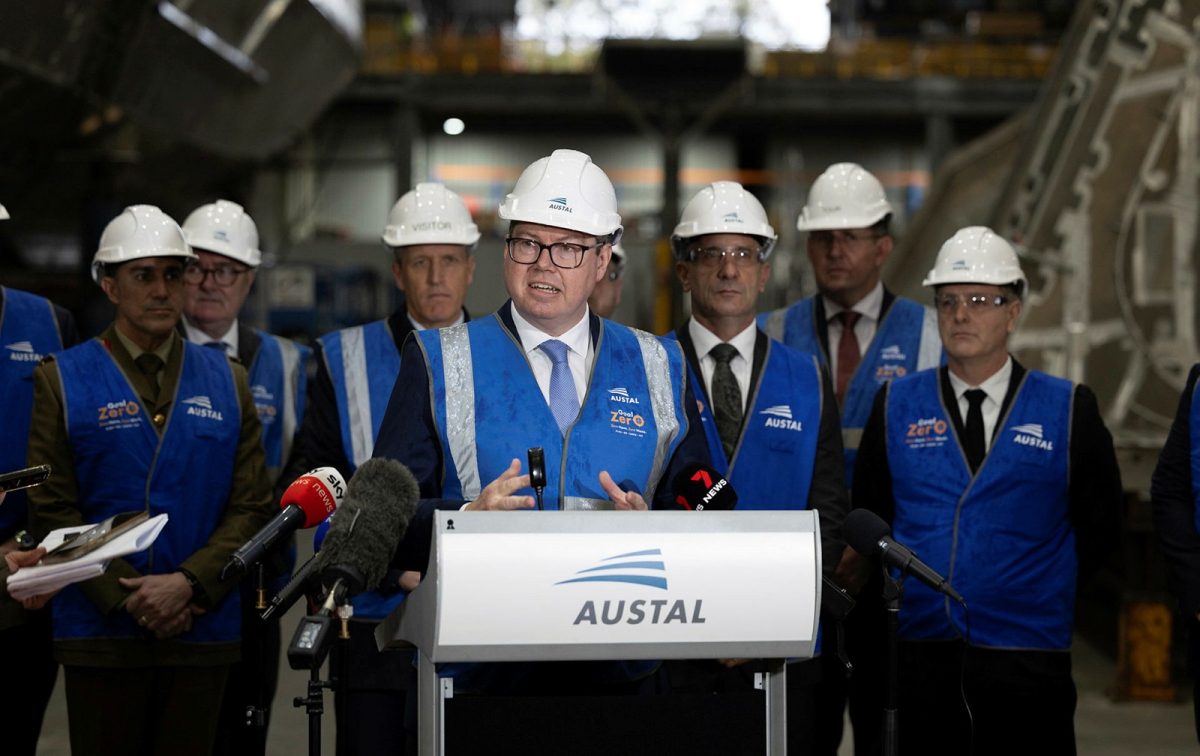
Minister for Defence Industry Pat Conroy announcing the accelerated program at Henderson on 23 July. Photo: ADF.
At 49 metres in length, the LMV-M is more than twice the size of an LCM-8. It will have a range of up to 2000 nm (3800 km), is capable of transporting up to 90 tonnes, and will be able to operate in sea-state 4 and survive in up to sea-state 7 conditions while retaining the ability to beach and un-beach itself to load and offload equipment.
The new vessel will feature cabin accommodation and a galley for its crew and some passengers, integral weapons stations, and will be capable of self-deploying from its northern bases over much longer distances.
Minister for Defence Industry Pat Conroy said building the landing craft was part of the government’s commitment to continuous naval shipbuilding in Western Australia and its ‘’Future Made in Australia’’ policy.
“This pipeline of work will result in opportunities for the Australian defence industry and support a highly skilled shipbuilding workforce for years to come,” he said.
“These new vessels will enable the ADF to deploy and sustain land forces to beaches, rivers and ports in Australia and across our region, enhance our ability to work with regional military partners, and support communities across the Indo-Pacific with humanitarian and disaster relief operations.”
As part of a wider structural change, the army will develop a new Littoral Lift Group in Townsville and Darwin that will be able to deploy heavy combat vehicles and other assets throughout South-East Asia and the Pacific region on amphibious vessels such as the LMV-M and LMV-H without the need for support from larger navy vessels such as the Canberra-class LHDs.


